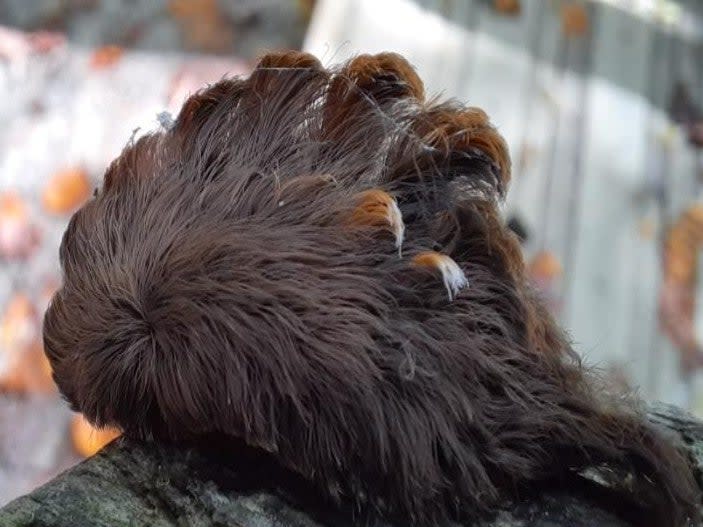Virginia residents warned to stay away from venomous caterpillars after several sightings reported in state

Officials in Virginia have warned residents to stay away from a type of venomous caterpillar that has been spotted in several areas of the state.
On Thursday, the Virginia Department of Forestry's health team announced that it had received several reports of sightings of the puss caterpillar in counties across east Virginia.
In a post on Facebook, the department wrote: “#SocialDistance away from this caterpillar!
“VDOF’s forest health team has received reports of the puss caterpillar in a few eastern Virginia counties. The ‘hairs’ of this caterpillar are actually venomous spines that cause a painful reaction if touched.”
The puss caterpillar, which is the larva of the southern flannel moth, is one of the most venomous in the US, according to CBS News.
The fur of the caterpillar hides toxic spines that stick to skin, and any contact with the creature could cause someone “excruciating pain,” according to National Geographic.
Theresa Dellinger, a diagnostician at the Insect Identification Lab at Virginia Tech, told CNN on Thursday that “it's not going to reach out and bite you, but if someone brushes up against that hair, it'll release toxins that you'll have a reaction to.”
Contact with a puss caterpillar can cause a reaction that includes swollen glands, a fever, an itchy rash, muscle cramps, and vomiting, according to the University of Michigan.
Dr Dale Porcher, of the Shores Animal Clinic, told WPEC that unlike with bee or wasp stings, the pain from a puss caterpillar “can endure for eight to 12 hours.”
The caterpillar is most commonly located in the south of the country, and is normally found in parks or near buildings.
The department added: “If you find the caterpillar, leave it alone and let its natural enemies control their populations— there are a number of other insects that will prey on them at different stages of their life cycle.”
Read more
Caterpillar with 'skull helmet' uses it against predators, study finds
Toxic caterpillar on the march in Spain after mild winter
Toxic caterpillar outbreak across southern England sparks warning


